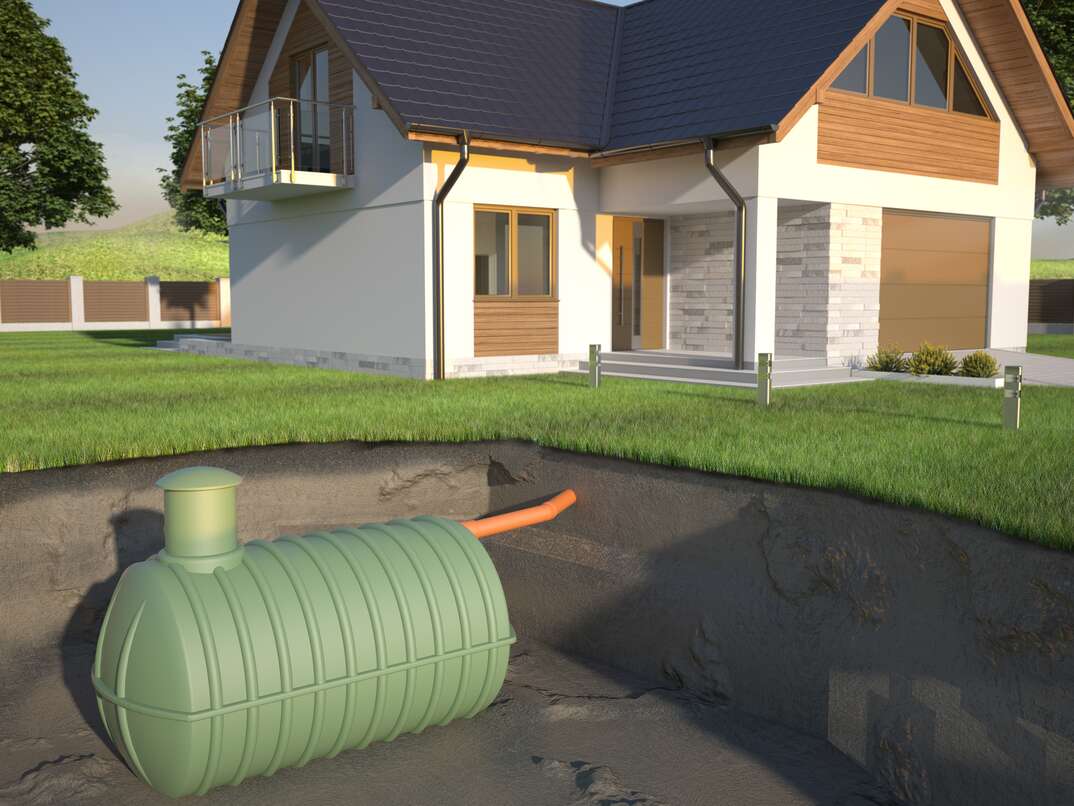When it comes to home ownership, certain aspects tend to be hidden from to view until they need attention. One important but often overlooked aspect of a home is the septic system. We often assume it is a given as it is assumed to do its job with no upkeep or stress. Like every system that uses septic, the septic tank has the potential to last for a long time and eventually need to be replaced.

The expense of replacing the septic tank can be the biggest financial burden for homeowners who don’t have the right plan. It is important to know the various factors that influence the cost of a sewer tank.
In order to determine the cost of a septic tanks replacement, you must consider more than just the cost. It’s not merely a matter of replacing the tank with a brand new one. There are many different components and services contribute to the overall cost. From obtaining permits and hiring contractors to excavation and installation, every step incurs costs that homeowners need to be aware of in order to budget effectively.
One of the most important aspects to be considered is the septic tanks replacement cost itself, including the expense of installing a the septic tank and leach field. The cost of a new tank is subject to a wide range of variations based on the size and type of the tank, as well as the complexity of installation. Furthermore, the location of your property, local laws, and soil conditions could also affect the price. Get in touch with experts on septic systems to evaluate your needs and receive an exact estimate. They’ll also take into consideration the dimensions and layout of the leach field to give you a comprehensive comprehension of the amount your project will cost.
The leach field or drain is yet another major cost. This element is crucial for water treatment and distribution. It is important to consider the best option when replacing a damaged or defective leachfield, or one that has failed. It can have a significant impact on the price for a septic system replacement. When calculating the cost, it is essential to consider factors such as the size and composition of leach fields, accessibility and the soil composition.
Alongside the physical costs, homeowners must also consider the intangible expenses that come with the replacement of a septic system. The process could disrupt your everyday life by requiring you to leave temporarily your house, or limit your use of water while the installation is being done. This inconvenience should be incorporated into your plans, since they can affect your routine and may cause additional expenses, including accommodation costs, or adjustments to your routine.
It is important to realize the need for proper maintenance and care of your septic systems is vital to prolong their lives and reduce the risk of replacement that is premature. The absence of maintenance work can lead to bigger problems later on, such as damages to the drainfield or breakdown of the tank. Planning for maintenance of septic systems is a wise investment that can save you money over the long term.
By now, you may have realized that determining the septic tank replacement cost is not a straightforward task. This involves careful analysis of a variety of factors, from the size and nature of tank, to the complexity of the installation or the condition and status of the leachfield. The place of your residence and local regulations could be a factor in the price. In order to accurately estimate the cost, you need to seek out experts who are experienced in the replacement of septic systems.
If you are considering replacing your septic, you may be stunned by the hidden expenses. Costs can quickly add to a large amount, so be aware prior to making any decision.
The hidden costs of septic system replacement include:
Cost of permits and inspections. Your local government will require permits prior to beginning your project to upgrade your system of septic. The permits are costly and you could also have to pay for inspections.
The costs of excavation and removal. The old septic system will need to be cleared and removed prior to the installation of a new system. is installed. This could be a costly process, especially if the older system is situated in a remote area.
The expense for backfilling and grading. After the old system has been gone, it is needed to grade and then backfill the hole. This is important to make sure that the new system is draining.
Costs of landscaping. You might have to landscape the area after the installation of the new system in order to maintain it in a neat and tidy manner. It could be costly, especially if a landscaper is needed.
It is important to consider these hidden expenses when you’re budgeting for the replacement of your septic system. By doing so you’ll be able to save yourself from surprises further down the line.
The decision to invest in environmentally friendly septic solutions is a good option for homeowners on a budget. These eco-friendly septic systems offer a cost-effective alternative to traditional systems, but they also help conserve the environment by reducing runoff and water pollution. Eco-friendly septic systems are becoming more affordable and available making them an excellent choice for those who wants to minimize the impact on the environment of their home without breaking the bank. Although there could be initial costs for moving to an environmentally friendly system, the extra costs can be more than compensated in the form of long-term savings. Green living isn’t simply a fashion statement, it’s an essential choice in lifestyle that everyone should make if they are concerned about the future of our planet. You can have peace of assurance that you’re contributing to the world community. It will also make sure that your home functions efficiently, with less effort and less monthly expenses.